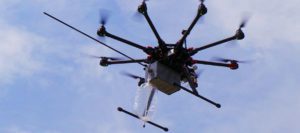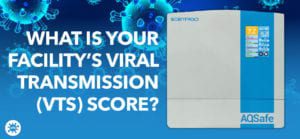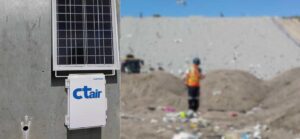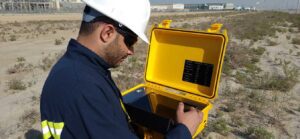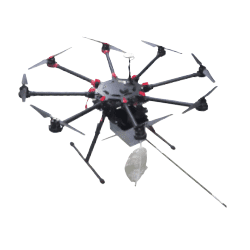According to WHO, more than 5.5 million people worldwide die each year as a result of air pollution. Many of these deaths occur in large cities, where exhaust, factories, and other industries fill the air with pollutants. WHO issued in 2005 the air quality guidelines (AQG) with the intent to achieve the protection of public health worldwide. Special mention in the AQG is given to specific pollutants that should be addressed to improve the air we breathe. These pollutants are Ozone (O3), Particulate matter, Nitrogen Dioxide (NO2) and Sulphur dioxide (SO2). These can be encountered easily in all cities and are generated by urban activities.
Traditionally, ambient air quality is measured by fixed regulatory monitoring stations. This achieves high accuracy in measuring pollutant concentrations at that specific point. Environmental regulators rely on exposure assessment techniques to calculate “spatial” predictions of pollutant concentration for urban areas. Unfortunately, they use limited data gathered from these monitoring stations. Even though the data is highly accurate, it is limited due to the high cost of AQM stations.
Air pollution exposure assessment techniques have helped to address the limitations of data coverage. However, they still fall short of accurately calculating local pollutant levels. Limitations of these approaches conclude they cannot characterize fine-scale gradients below 1 km2 that drive population exposure to local emissions. These include traffic, construction sites and local industrial pollutants. Dispersion models involve uncertainty as they require emission data that commonly represents a snap-shot of emissions from the sources.
In response to growing concerns over the effects of air pollution, cities have improved their efforts to measure air quality. Singapore, Barcelona, London, and San Francisco have begun using affordable compact air quality monitors. Using new data, cities can map areas of high concentration of pollutants, track changes over time, identify pollution sources, analyze potential interventions, and eventually provide a baseline for future urban plans.
Urban air quality and pollutants
Many pollutants affect the air of a metropolis. Ground-level ozone and fine particulates are identified as the most relevant pollutants for an air quality monitoring system. This is based on their effect on human health and variations in concentrations within short distances.
Ground-level ozone is a threat to the respiratory system and lung function. Long exposure to O3 can involve health problems such as asthma and bronchitis. Moreover, respiratory diseases due to O3 can anticipate death. Many studies highlight the risks for human health due to exposure to O3.
Particulate is very dangerous for human health. The inhalation of fine particulate matter can cause serious respiratory system problems. These include asthma, lung cancer, respiratory disease, gestational complications, and cardiovascular disease. Moreover, long-term exposure to particulate matter such as PM2.5 and PM10 increases risks of premature mortality, similar to O3.
Other urban pollutants such as sulphur dioxide (SO2) and Nitrogen dioxide (NO2) are associated with combustion processes. These are generally found in the atmosphere in close association with other primary pollutants, including ultrafine particulates. They are itself toxic and precursors of O3.
Green Smart City
A smart city is an urban area that uses different types of electronic data collection sensors. This is done to supply information used to manage assets and resources efficiently. Therefore, A smart city is more prepared to respond to challenges than a city with a simple “transactional” relationship with its citizens.
Smart cities leverage technology to improve the performance of public services and to create huge economic benefits. Examples of these benefits can be improvements in water management, waste management, parking, lighting and others. Smart City Platforms are designed to integrate services creating added value greater than the sum of its parts. The SCP is integrated by data sources, data analysis and information. Sources of data are used to feed the SCP through a variety of input sources. These include citizens, smart sensors, real-time systems, processed data and legacy systems.
Scentroid Technology for Smart Air Quality Monitoring
Scentroid’s advanced sensing technology allows smart cities to monitor multiple air quality parameters using an accurate, compact monitoring station. The Scentinal SL50. Scentinal can be configured with a variety of sensors to measure pollutants such as O3, NO2, SO2, PM 2,5,10. It can also be configured to monitor noise and radiation to near reference accuracy. The low cost, minimal maintenance, and compact form have allowed cities to deploy numerous Scentinals to better understand pollutant levels.
Scentinal collects data and sends it to our cloud-based platform. It uses built-in high-performance computing to bring artificial intelligence to any street corner. It warns authorities of rising pollutant levels, possible sources, and accurate predictions of pollutant levels for the next 48 hours.
Scentinal Delivers Accurate and Reliable Data for Citizens
The role of Scentinal in Smart cities is providing accurate, reliable air quality data with improved spatial and temporal resolution. Generally, air pollutants have strong spatial gradients over short distances as city planning configurations are not always ideal. Sources of pollution will be unevenly distributed, therefore the need for an increased number of monitors is ever-growing. Beijing metropolitan area, for example, has a total of 23 regulatory monitoring stations distributed within 1,368 Km2 to assess air quality for more than 20 million inhabitants.
Scentinal provides near reference air quality monitoring that provides sufficient accuracy and data quality to complement the existing air quality regulatory stations with the advantage of reduced operating costs. The U.S. Environmental Protection Agency (EPA) has published the Air Sensor Guidebook EPA600/R-14-159, which defines how an instrument performs in comparison to Federal Reference methods or Federal Equivalent methods and defines an acceptable expanded uncertainty between 20% and 30% for these types of devices. Scentroid instruments have been tested by various agencies including the Italian Research institute CNR and the accuracy has been recorded to be within 5-10% of reference stations. This amazing accomplishment has been the result of years of research and development conducted by Scentroid on areas of self-calibration, digital noise cancellation algorithms, and artificial intelligence.
Scentinal has the capability to work as a Plug and Play device as it can be configured to work with any smart city platform. Scentinal will transmit data in real-time with a dedicated API to allow rapid deployment into any smart city platform. This allows seamless integration and scalability of the air quality monitoring network by easily logging the equipment ID into the smart city platform; Scentinal will be on-line once it is powered ON and connected to the internet.
An intelligent workflow allows an automated machine-to-machine communication for predictive maintenance and calibration as required, this capability will be available at the user interface. Scentinal can be also configured with an alarm system to inform those locations when pollutants are exceeding the selected air quality thresholds. This will allow the user to visually detect the locations in which exceedances are occurring in real-time. Integrating an intelligent network of air quality sensors into a smart city will allow understanding air quality data as it relies on traffic patterns, factory schedules and other human activities.
By publishing all data collected using the Scentinal intelligent monitoring stations will serve as a baseline to address air quality health-related issues such as asthma, or to increase life expectancy including other associated benefits such as improvements in urban planning to reduce traffic pollution or to properly relocate industry hubs to minimize impacts of industrial operations.
The backbone of any SCP will rely on communications to transmit data gathered by hundreds of thousands of devices. Scentinal can be configured to fulfill any communication requirement, from Wireless communication such as LORA to 4G infrastructures, making it an ideal instrument for SCP seamless integration.
Scentinal network was designed to be controlled remotely across the existing network infrastructure, therefore monitoring sensor health, firmware upgrades, and remote calibration is a matter of only a few clicks.
Sensor accuracy and precision
Scentroid accuracy and precision have been tested against FEM (Federal Equivalent MethodUSEPA). Accuracy and precision are calculated by examining the slope and y-intercept of a linear regression equation. Scentinal results showed comparable results to the FEM monitor with expanded uncertainty <10%. This accuracy is achieved using a variety of techniques new to the industry. Scentroid’s Patented self-calibration technology meets USEPA-600/R-12/531 protocol and allows the system to conduct a full calibration of its sensors every 12 hours similar to the most sophisticated Gas Chromatography based instruments. Other advancements include Scentinal’s hybrid sensing that combines multiple sensing technologies into a single reading using advanced artificial intelligence algorithms for greater accuracy and reliability.


